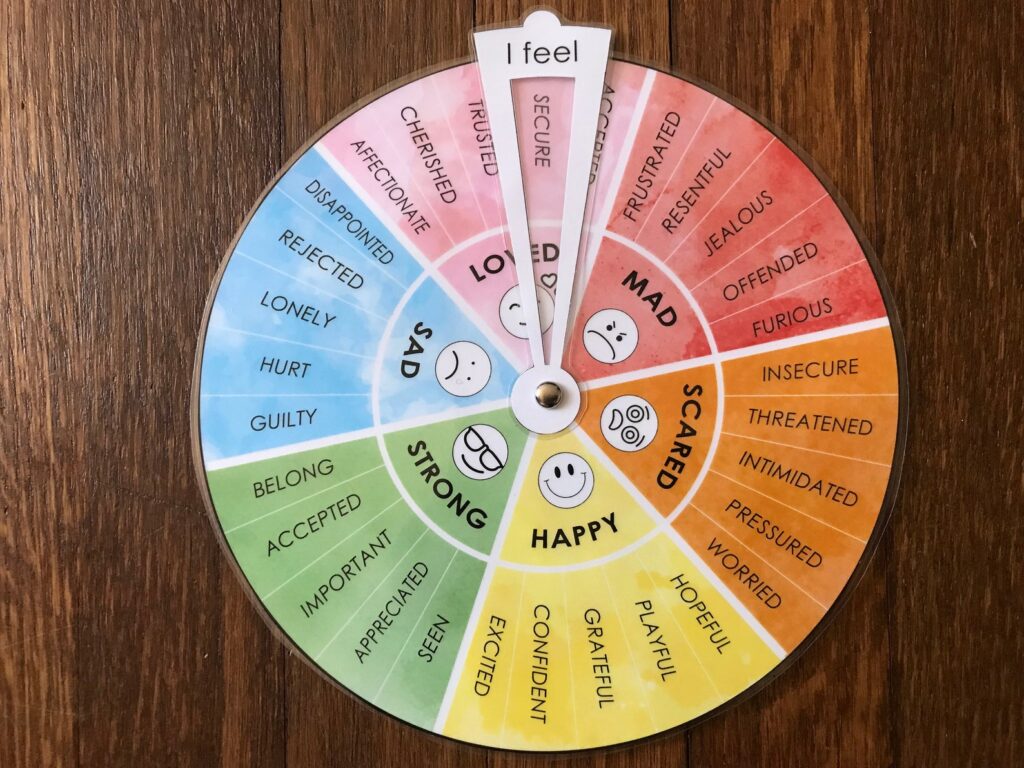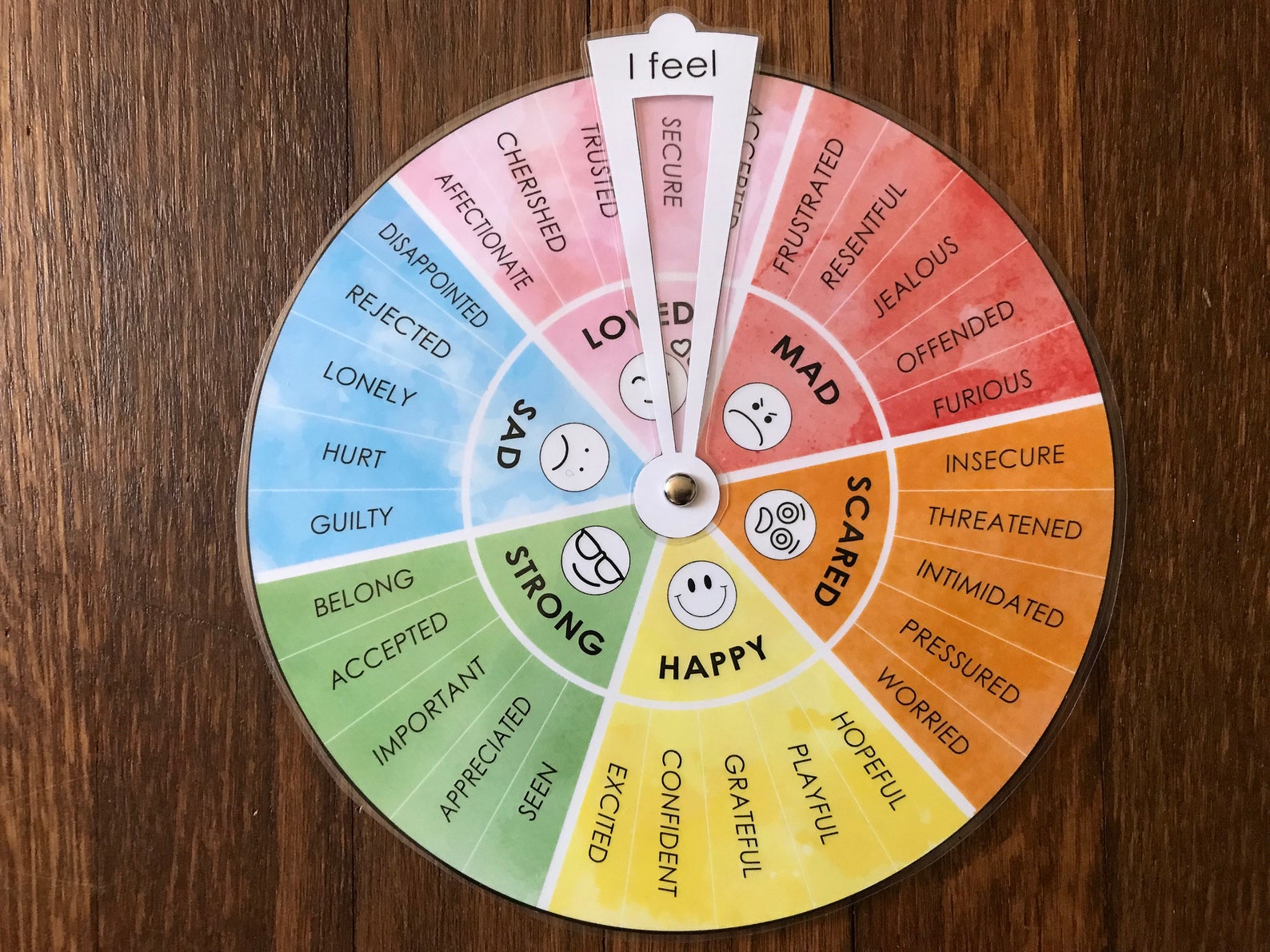
Unlock Your Emotional Intelligence: How to Use a Feelings Wheel Effectively
In today’s fast-paced world, understanding and managing our emotions is more crucial than ever. Emotional intelligence, the ability to recognize, understand, manage, and utilize emotions, is a key skill for personal and professional success. One powerful tool that can help us develop this crucial skill is the feelings wheel. This article will delve into how to use a feelings wheel effectively to enhance your emotional awareness and improve your overall well-being. We’ll explore its benefits, provide practical steps, and address common questions to guide you on your emotional intelligence journey. Learning how to use a feelings wheel can be transformative.
What is a Feelings Wheel?
A feelings wheel, also known as an emotion wheel, is a visual tool that maps out a wide range of emotions, typically organized into concentric circles. At the center, you’ll find core emotions like happiness, sadness, anger, fear, and surprise. Moving outward, the wheel expands into more nuanced and specific emotions related to each core emotion. For example, under ‘anger,’ you might find emotions like frustration, irritation, rage, and resentment. This visual representation helps individuals identify and articulate their feelings with greater precision.
The concept isn’t entirely new, but the modern iterations, often credited to Dr. Gloria Willcox, have gained popularity in therapeutic settings and self-help practices. The power of the feelings wheel lies in its ability to provide a vocabulary for emotions, allowing people to move beyond simple labels and delve deeper into the complexities of their internal states.
Why Use a Feelings Wheel?
There are several compelling reasons to incorporate a feelings wheel into your emotional toolkit:
- Enhanced Emotional Awareness: By exploring the various emotions on the wheel, you can become more attuned to your own feelings and the feelings of others.
- Improved Communication: The feelings wheel provides a shared language for discussing emotions, making it easier to communicate your needs and understand the perspectives of others.
- Better Emotional Regulation: Recognizing and naming your emotions is the first step towards managing them effectively. The feelings wheel helps you identify the root causes of your emotional responses, enabling you to develop healthier coping strategies.
- Increased Empathy: Understanding the nuances of different emotions can foster empathy and compassion for others, strengthening your relationships and improving your social interactions.
- Personal Growth: Using a feelings wheel is a proactive step towards self-discovery and personal growth. It encourages introspection and helps you gain a deeper understanding of your emotional landscape.
How to Use a Feelings Wheel: A Step-by-Step Guide
Step 1: Choose a Feelings Wheel
Many variations of the feelings wheel are available online and in print. Select one that resonates with you and that you find visually appealing and easy to understand. Some wheels are simpler, focusing on basic emotions, while others are more complex, offering a wider range of nuanced feelings. Consider your current level of emotional awareness and choose a wheel that suits your needs.
Step 2: Identify Your Initial Emotion
Take a moment to reflect on how you’re feeling. Start by focusing on the core emotions at the center of the wheel: happy, sad, angry, fearful, or surprised. Which one best describes your overall emotional state? Don’t overthink it; trust your initial intuition.
Step 3: Explore the Outer Layers
Once you’ve identified your primary emotion, move outward to the next layer of the feelings wheel. Explore the emotions that are related to your primary emotion. For example, if you’re feeling angry, look at the different types of anger listed on the wheel, such as frustrated, irritated, or resentful. Which of these emotions feels most accurate?
Step 4: Drill Down Further
Continue to explore the outer layers of the feelings wheel, drilling down into more specific and nuanced emotions. Ask yourself questions like: What triggered this feeling? How intense is it? What thoughts are associated with this feeling? The more specific you can be, the better you’ll understand your emotional experience.
Step 5: Journal Your Experience
Writing down your thoughts and feelings can help you process your emotions and gain clarity. After using the feelings wheel, take some time to journal about your experience. Describe the emotions you identified, the triggers that caused them, and any insights you gained. This practice can help you develop a deeper understanding of your emotional patterns and triggers. [See also: Benefits of Journaling for Mental Health]
Step 6: Practice Regularly
Like any skill, emotional awareness takes practice. Make a habit of using the feelings wheel regularly, even when you’re not feeling particularly emotional. The more you practice, the easier it will become to identify and articulate your feelings. Consider using the wheel as part of your daily mindfulness practice or as a tool for self-reflection before or after challenging situations.
Tips for Using a Feelings Wheel Effectively
- Be Honest with Yourself: The feelings wheel is only effective if you’re willing to be honest with yourself about your emotions. Don’t try to suppress or deny your feelings; instead, embrace them as valuable sources of information about your internal state.
- Don’t Judge Your Emotions: All emotions are valid, even the ones that feel uncomfortable or negative. Avoid judging yourself for feeling a certain way. Instead, focus on understanding why you’re feeling that way and how you can manage your emotions in a healthy way.
- Use it as a Starting Point: The feelings wheel is a tool, not a definitive guide. It’s meant to help you explore your emotions, not to define them. If you can’t find the exact word to describe your feeling, that’s okay. Use the wheel as a starting point and then explore other resources, such as a thesaurus or a list of emotions, to find the right fit.
- Combine it with Other Tools: The feelings wheel can be used in conjunction with other emotional intelligence tools, such as mindfulness meditation, cognitive behavioral therapy (CBT), and emotional freedom techniques (EFT). These tools can help you further develop your emotional awareness and regulation skills. [See also: Mindfulness Meditation Techniques]
- Seek Professional Help: If you’re struggling to manage your emotions on your own, don’t hesitate to seek professional help. A therapist or counselor can provide guidance and support as you navigate your emotional challenges.
Common Questions About Using a Feelings Wheel
Q: Is a feelings wheel the same as an emotions chart?
A: While the terms are sometimes used interchangeably, a feelings wheel typically presents emotions in a circular, hierarchical format, while an emotions chart may be a simple list or grid. The wheel’s visual structure often aids in identifying nuanced relationships between emotions.
Q: Can children use a feelings wheel?
A: Yes, simplified versions of the feelings wheel are excellent tools for helping children identify and express their emotions. These wheels often use pictures or simple language to make it easier for children to understand and use them.
Q: How often should I use a feelings wheel?
A: There’s no set rule. Some people find it helpful to use it daily as part of a mindfulness practice, while others use it as needed when they’re experiencing strong emotions or feeling overwhelmed. Experiment to find what works best for you.
Q: Can using a feelings wheel help with anxiety?
A: Yes, identifying and understanding your emotions is a crucial step in managing anxiety. By using a feelings wheel, you can become more aware of the specific emotions underlying your anxiety, which can help you develop more effective coping strategies. [See also: Coping Strategies for Anxiety]
Conclusion
The feelings wheel is a valuable tool for anyone seeking to enhance their emotional intelligence and improve their overall well-being. By learning how to use a feelings wheel effectively, you can develop greater emotional awareness, improve your communication skills, and cultivate healthier emotional regulation strategies. Embrace this tool as part of your journey towards self-discovery and emotional mastery. Start exploring your emotional landscape today and unlock the power of your feelings.

